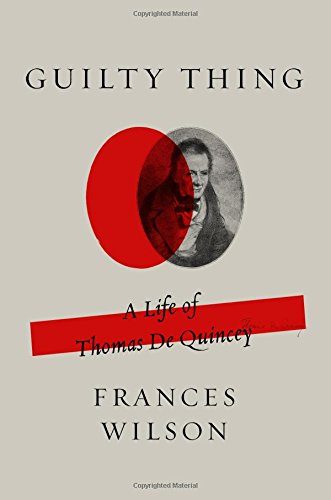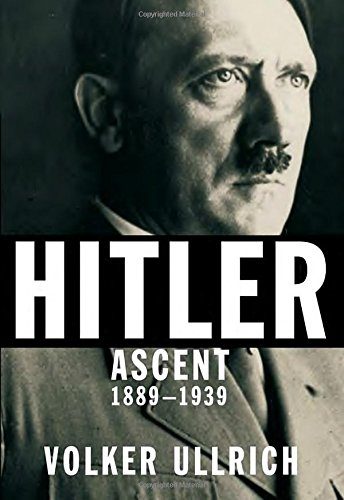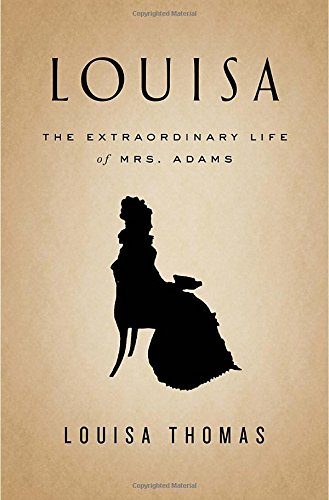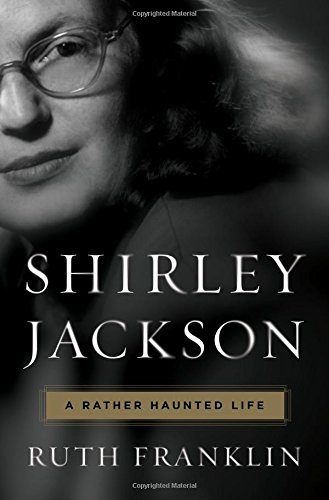Fall 2017 Preview
We’re highlighting here just some of the books due out this fall and winter that are likely to garner critical and popular acclaim, because of their subject, their author, or both. The titles already getting buzz are drawn from Publishers Weekly, Kirkus Reviews, Booklist, Library Journal, and Amazon, among others. BIO members with upcoming releases are noted in bold type.
a
Please note: We do our best to learn about new books, and the ongoing monthly “In Stores” feature in The Biographer’s Craft will include even more fall and winter releases. But, if we’ve missed any members’ upcoming releases, please let us know so we can add them to this list.
September
Pamela Hansford Johnson: A Writing Life by Deirdre David (Oxford University Press)
Anne Bancroft: A Life by Douglass K. Daniel (University Press of Kentucky)
A Civil Life in an Uncivil Time: Julia Wilbur’s Struggle for Purpose by Paula Tarnapol Whitacre (Potomac Books)
Gorbachev: His Life and Times by William Taubman (W. W. Norton)
The Disappearance of Émile Zola: A Story of Love, Literature, and the Dreyfus Case by Michael Rosen (Pegasus)
The Woman Who Smashed Codes: A True Story of Love, Spies, and the Unlikely Heroine Who Outwitted America’s Enemies by Jason Fagone (Dey Street)
Stan Lee: The Man behind Marvel by Bob Batchelor (Rowman & Littlefield)
The Far Away Brothers: Two Young Migrants and the Making of an American Life by Lauren Markham (Crown)
Maximum Volume: The Life of Beatles Producer George Martin, The Early Years, 1926–1966 by Kenneth Womack (Chicago Review Press)
A Force So Swift: Mao, Truman, and the Birth of Modern China, 1949 by Kevin Peraino (Crown)
Man of the Hour: James B. Conant, Warrior Scientist by Jennet Conant (Simon & Schuster)
The Infidel and the Professor: David Hume, Adam Smith, and the Friendship That Shaped Modern Thought by Dennis C. Rasmussen (Princeton University Press)
Gilded Suffragists: The New York Socialites Who Fought for Women’s Right to Vote by Johanna Neuman (New York University Press)
The Last of the Tsars: Nicholas II and the Russia Revolution by Robert Service (Pegasus Books)
The Fearless Benjamin Lay: The Quaker Dwarf Who Became the First Revolutionary Abolitionist by Marcus Rediker (Beacon Press)
Uncompromising Activist: Richard Greener, First Black Graduate of Harvard College by Katherine Reynolds Chaddock (Johns Hopkins University Press)
October
Arthur Vandenberg: The Man in the Middle of the American Century by Hendrik Meijer (University of Chicago Press)
Ali: A Life by Jonathan Eig (Houghton Mifflin Harcourt)
Hoover: An Extraordinary Life in Extraordinary Times by Kenneth Whyte (Knopf)
Code Girls: The Untold Story of the American Women Code Breakers of World War II by Liza Mundy (Hachette)
Lioness: Golda Meir and the Nation of Israel by Francine Klagsbrun (Schocken)
Lou Reed: A Life by Anthony DeCurtis (Little, Brown)
Red Famine: Stalin’s War on Ukraine by Anne Applebaum (Doubleday)
Friends Divided: John Adams and Thomas Jefferson by Gordon S. Wood (Penguin)
Hank and Jim: The Fifty-Year Friendship of Henry Fonda and James Stewart by Scott Eyman (Simon & Schuster)
Blood Brothers: The Story of the Strange Friendship Between Sitting Bull and Buffalo Bill by Deanne Stillman (Simon & Schuster)
Grant by Ron Chernow (Penguin)
A Generous Vision: The Creative Life of Elaine de Kooning by Cathy Curtis (Oxford University Press)
The Gourmands’ Way: Six Americans in Paris and the Birth of a New Gastronomy by Justin Spring (Farrar, Straus and Giroux)
Start to Finish: Woody Allen and the Art of Moviemaking by Eric Lax (Knopf)
Wayne and Ford: The Films, the Friendship, and the Forging of an American Hero by Nancy Schoenberger (Nan A. Talese)
A Bold and Dangerous Family: The Remarkable Story of an Italian Mother, Her Two Sons, and Their Fight Against Fascism by Caroline Moorehead (Harper)
Leonardo da Vinci by Walter Isaacson (Simon & Schuster)
Renoir: An Intimate Biography by Barbara E. White (Thames and Hudson)
James Wright: A Life in Poetry by Jonathan Blunk (Farrar, Straus and Giroux)
A Secret Sisterhood: The Literary Friendships of Jane Austen, Charlotte Brontë, George Eliot, and Virginia Woolf by Emily Midorikawa and Emma Claire Sweeney (Houghton Mifflin Harcourt)
The Accidental President: Harry S. Truman and the Four Months That Changed the World by A. J. Baime (Houghton Mifflin Harcourt)
The Ghost: The Secret Life of CIA Spymaster James Jesus Angleton by Jefferson Morley (St. Martin’s Press)
Ballad of the Anarchist Bandits: The Crime Spree That Gripped Belle Époque Paris by John Merriman (Nation Books)
Fire on the Track: Betty Robinson and the Triumph of the Early Olympic Women by Roseanne Montillo (Crown)
November
The Man Who Made the Movies: The Meteoric Rise and Tragic Fall of William Fox by Vanda Krefft (HarperCollins)
Overtaken by the Night: One Russian’s Journey through Peace, War, Revolution, and Terror by Richard G. Robbins Jr. (University of Pittsburgh Press)
Stalin: Waiting for Hitler, 1929–1941 by Stephen Kotkin (Penguin)
Gold Dust Woman: A Biography of Stevie Nicks by Stephen Davis (St. Martin’s Press)
Franklin D. Roosevelt: A Political Life by Robert Dallek (Viking)
Lenin: The Man, the Dictator, and the Master of Terror by Victor Sebestyen (Pantheon)
The Bughouse: The Poetry, Politics, and Madness of Ezra Pound by Daniel Swift (Farrar Straus and Giroux)
American Cicero: Mario Cuomo and the Defense of American Liberalism by Saladin Ambar (Oxford University Press)
Michael Curtiz: A Life in Film by Alan K. Rode (University Press of Kentucky)
Avedon: Something Personal by Norma Stevens and Steven M. L. Aronson (Spiegel & Grau)
The Trials of a Scold: The Incredible True Story of Writer Anne Royall by Jeff Biggers (Thomas Dunne)
Exiled: The Last Days of Sam Houston by Ron Rozelle (Texas A&M University Press)
President McKinley: Architect of the American Century by Robert W. Merry (Simon & Schuster)
Prairie Fires: The American Dreams of Laura Ingalls Wilder by Caroline Fraser (Metropolitan Books)
Ambition, Pragmatism, and Party: A Political Biography of Gerald R. Ford by Scott Kaufman (University Press of Kansas)
When the World Seemed New: George H. W. Bush and the End of the Cold War by Jeffrey A. Engel (Houghton Mifflin Harcourt)
Becoming Hitler: The Making of a Nazi by Thomas Weber (Basic Books)
The Dawn Watch: Joseph Conrad in a Global World by Maya Jasanoff (Penguin)
December
Charles Darwin: Victorian Mythmaker by A. N. Wilson (Harper)
The Last Man Who Knew Everything: The Life and Times of Enrico Fermi, Father of the Nuclear Age by David N. Schwartz (Basic Books)
Parental Discretion Is Advised: The Rise of N.W.A and the Dawn of Gangsta Rap by Gerrick D. Kennedy (Atria Books)
The Last 100 Days: FDR at War and at Peace by David B. Woolner (Basic Books)
Goddess of Anarchy: The Life and Times of Lucy Parsons, American Radical by Jacqueline Jones (Basic Books)
An Uncommon Reader: A Life of Edward Garnett by Helen Smith (Farrar, Straus and Giroux)
January
Jackie, Janet & Lee: The Secret Lives of Janet Auchincloss and Her Daughters, Jacqueline Kennedy Onassis and Lee Radziwill by J. Randy Taraborrelli (St. Martin’s Press)
The Road Not Taken: Edward Lansdale and the American Tragedy in Vietnam by Max Boot (Liveright)
The Patriot: The Stunning True Story of Aaron Hernandez: His Rise and Fall as a Football Superstar, His Two Explosive Trials for Murder, His Shocking Death by James Patterson (Little, Brown)
The Monk of Mokha by Dave Eggers (Knopf)
The Gambler: How Penniless Dropout Kirk Kerkorian Became the Greatest Deal Maker in Capitalist History by William C. Rempel (Dey Street)
Jefferson’s Daughters: Three Sisters, White and Black, in a Young America by Catherine Kerrison (Ballantine Books)
The Wizard and the Prophet: Two Remarkable Scientists and Their Dueling Visions to Shape Tomorrow’s World by Charles C. Mann (Knopf)
The Girl on the Velvet Swing: Sex, Murder, and Madness at the Dawn of the Twentieth Century by Simon Baatz (Mulholland Books)
Lincoln and Churchill: Statesmen at War by Lewis E. Lehrman (Stackpole Books)
The Stowaway: A Young Man’s Extraordinary Adventure to Antarctica by Laurie Gwen Shapiro (Simon & Schuster)
The Most Dangerous Man in America: Timothy Leary, Richard Nixon and the Hunt for the Fugitive King of LSD by Bill Minutaglio and Steven L. Davis (Twelve)
The Moralist: Woodrow Wilson and the World He Made by Patricia O’Toole (Simon & Schuster)
When Montezuma Met Cortés: The True Story of the Meeting That Changed History by Matthew Restall (Ecco)
Black Fortunes: The Story of the First Six African Americans Who Escaped Slavery and Became Millionaires by Shomari Wills (Amistad)
February
Paul: A Biography by N. T. Wright (HarperOne)
Without Precedent: Chief Justice John Marshall and His Times by Joel Richard Paul (Riverhead Books)
Fatal Discord: Erasmus, Luther, and the Fight for the Western Mind by Michael Massing (Harper)
Building the Great Society: Inside Lyndon Johnson’s White House by Joshua Zeitz (Viking)
Olivia de Havilland and the Golden Age of Hollywood by Ellis Amburn (Lyons Press)
The Food Explorer: The True Adventures of the Globe-Trotting Botanist Who Transformed What America Eats by Daniel Stone (Dutton)
The Audacity of Inez Burns: Dreams, Desire, Treachery & Ruin in the City of Gold by Stephen G. Bloom (Regan Arts)
Wallis in Love: The Untold Life of the Duchess of Windsor, the Woman Who Changed the Monarchy by Andrew Morton (Grand Central Publishing)
Tom Yawkey: Patriarch of the Boston Red Sox by Bill Nowlin (University of Nebraska Press)
The Prisoner King: Charles I in Captivity by John Matusiak (The History Press)
The Faith of Donald J. Trump: A Spiritual Biography by David Brody and Scott Lamb (Broadside Books)
Renoir’s Dancer: The Secret Life of Suzanne Valadon by Catherine Hewitt (St. Martin’s Press)
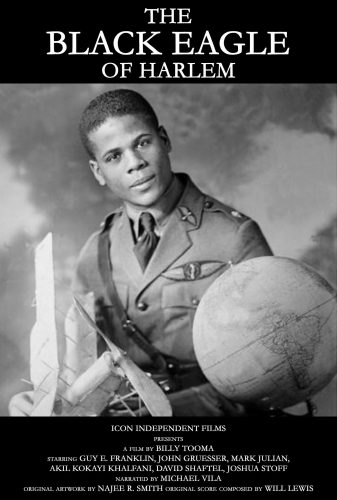 The Black Eagle of Harlem is a study in biography and forgotten history. Col. Hubert Fauntleroy Julian—aviator, soldier of fortune, and arms dealer—led a life of high adventure, finding himself at the center and periphery of major world events. Julian drew headlines wherever he went, generated a fair share of controversy, but most importantly he fought against racial attitudes and shattered countless stereotypes. He flew before Charles Lindbergh, traveled to Ethiopia before most Americans had seen their own Grand Canyon, and pushed for the advancement of his race even while many of his own people vilified him with accusations of being a flamboyant charlatan. Julian’s Zelig-like ability to adapt and take on multiple personas helped him persevere in the face of adversity. The challenge of telling the most honest version of Julian’s story is what drove this project. The documentary spawned from this study utilizes a combination of interviews, archival materials, voiceovers, and original artwork to recreate the amazing—sometimes unbelievable—life of the Black Eagle, one of the twentieth century’s most intriguing icons. . . .
The Black Eagle of Harlem is a study in biography and forgotten history. Col. Hubert Fauntleroy Julian—aviator, soldier of fortune, and arms dealer—led a life of high adventure, finding himself at the center and periphery of major world events. Julian drew headlines wherever he went, generated a fair share of controversy, but most importantly he fought against racial attitudes and shattered countless stereotypes. He flew before Charles Lindbergh, traveled to Ethiopia before most Americans had seen their own Grand Canyon, and pushed for the advancement of his race even while many of his own people vilified him with accusations of being a flamboyant charlatan. Julian’s Zelig-like ability to adapt and take on multiple personas helped him persevere in the face of adversity. The challenge of telling the most honest version of Julian’s story is what drove this project. The documentary spawned from this study utilizes a combination of interviews, archival materials, voiceovers, and original artwork to recreate the amazing—sometimes unbelievable—life of the Black Eagle, one of the twentieth century’s most intriguing icons. . . .